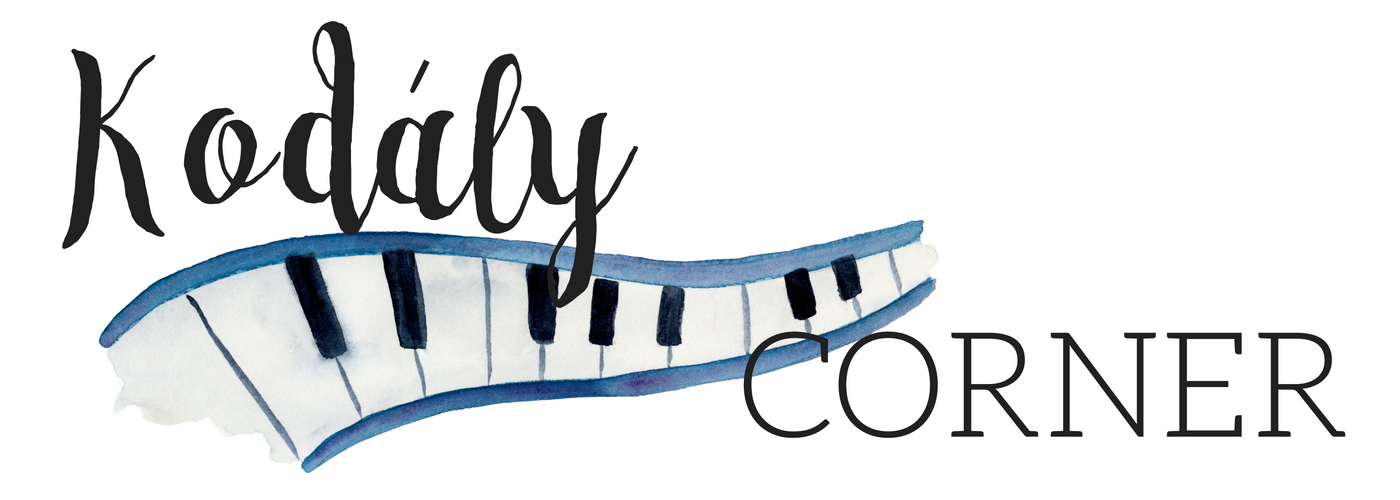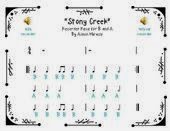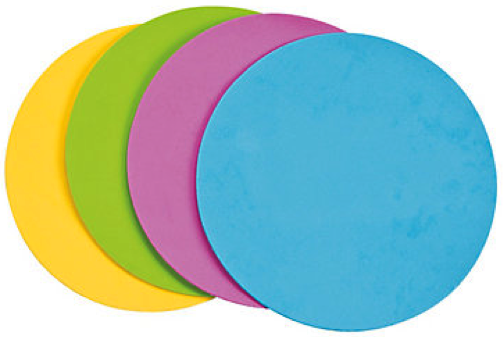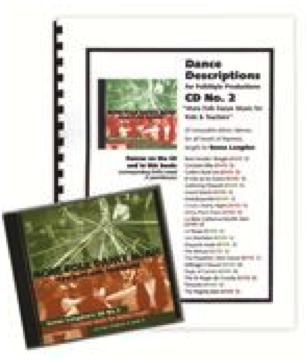Hi all -- Christopher here. Lately, I've been thinking more and more about the ways that we use music in our lives -- soothing a crying baby, offering praise, or
just joining together for the sonic satisfaction of putting words and melodies
and rhythms together to create a group musicking experience that can be
incredibly powerful. There is also a
rich tradition of songs and folk musics used as forms of protest, or to comment on the status
of particular aspects of the world we live in.
The Gypsy Rover is one of the songs that can do that. The text of the song refers to a “lady” who leaves behind her finery after she falls in love with a traveling gypsy. Her father is none-too-pleased about this turn of events, and goes after her to bring her back to their castle. In the end, though, he finds her, and the classic fairy tale ending ensues in which the lady tells her father that “he’s not a gypsy, my father…but lord of these lands all over.”
And here are her lesson plans (Note: I'm happy to send on my powerpoint slides, if you'd like them):
Enjoy the rest of your school year, everyone!
8
As we get towards the end of the year, I often begin to
think: What’s the big picture here? What
do I want my kids to walk away with? The
most important thing is always for them to love music, to feel that the musical
experiences that they have in music class fulfill them and make them want
to go on to create music for the rest of their lives. I also want them to get those music literacy
skills, because even if they don’t
know it, I know that being able to
read and write music will be a valuable skill in helping them attain that first
goal of lifelong music-making.
But I also want them to think broadly about the world,
and to understand the ways that music can work in it. Particularly towards the end of the year,
when the literacy elements are all in practice stages, I am comfortable taking
more time than usual to engage in discussion about issues that come up in the
music that we do in class. And
sometimes, to seek out musical experiences for them that will raise important
issues for them to consider. Here are a
couple of experiences that have worked for me in the past couple of months.
Grade 5: Those Gypsies, How They Rove…
Fifth graders at the end of the year are often an
interesting bunch – ready to move on to middle school, with the attitude that
goes with that, but still in many ways children. I feel that they are just able to understand
(and experience) the very tip of some of the more sophisticated emotional
experiences in life, and finding ways to tap into their deepening maturity can
be a powerful experience for me as a teacher.
The Gypsy Rover is one of the songs that can do that. The text of the song refers to a “lady” who leaves behind her finery after she falls in love with a traveling gypsy. Her father is none-too-pleased about this turn of events, and goes after her to bring her back to their castle. In the end, though, he finds her, and the classic fairy tale ending ensues in which the lady tells her father that “he’s not a gypsy, my father…but lord of these lands all over.”
Before they ever hear the song, I ask the students what they know
about gypsies. Usually, kids have the
carnival-like visions of women in flowing head-scarves, looking into crystal
balls to tell your fortune, and there’s always laughter as we talk about these
ideas. But I also usually have students
who state that they think that gypsies travel a lot, in caravans, and that they
sometimes steal your stuff. At this
point, I transition into some cultural information about the Roma of Eastern
Europe, a nomadic people who have long been very poor and experienced
discrimination.
Then, I perform the song while they listen, papers in
hand, to figure out what happens in the story.
2. She left her father’s
castle gate,
She left her fair young
lover,
She left her servants and
her estate,
To follow the gypsy rover.
3. She left behind her
velvet gowns
And shoes of Spanish leather
They whistled and they sang
‘till the greenwood rang
As they rode off together.
4. Last night she slept on a
goose feather bed
With satin sheets for to
cover,
Tonight she sleeps on the
cold, cold ground,
Beside her gypsy rover.
5. Her father saddled up his
fastest steed,
And roamed the valleys all
over
He sought his daughter at
great speed
And the whistling gypsy
rover.
6. He came at last to a
mansion gate,
Down by the river Crady,
And there was music and
there was wine,
For the gypsy and his lady.
7. “Oh, he’s not a gypsy, my father,” she said
“But lord of these lands all
over,
“And I will stay ‘til my
dying day,
“With my whistling gypsy
rover.”
While it seems straightforward to me, they aren’t always so sure, and
have lots of ideas that I might not have thought about: Is he a gypsy? Isn’t he a gypsy? If he’s not a gypsy, why would he lie? Did he break into an abandoned castle to
pretend he’s rich? Could it be that she
has more than one castle, and they are in one of hers? The students use examples from the text to
support their assertions.
Their understanding of the song evolves as we continue to
sing it in future classes, and it leads to continued discussion about
stereotypes and oppression. The students
relate the discrimination that the real-life Roma have faced (and continue to
face) to groups in our country. Economic
inequality comes up, and the ways that this can affect the way people are viewed
by others.
While many recordings use a rollicking 6/8 performance
style for the piece, I prefer a slower, contemplative on, inspired by a
recording by Jill Trinka. I accompany
the song on the dulcimer, finger-picking a repetitive, fairly easy pattern that
I modified from Jill’s version. It’s a
mesmerizing song for the students, one of those songs that worms its way into
the souls of many of them. I teach in a
K-8 school, but I only teach the students up until 5th grade. When I run into these students in 8th grade, this
is one of the songs that they will often bring up, when naming their favorites.
Grade 3: Whose Land is it, Anyway?
This Land is Your
Land: A classic! Woody Guthrie wrote
the wonderful text to a tune based on an old gospel hymn, and I really wish it was our actual national anthem.
In the late 1990s, a picture book version of the song was published,
with wonderful drawings made by Kathy Jakobsen.
This has become a staple of my classes towards the end of
the year. I think that this is one of
those songs that all students should know.
Since the range is fairly small, even the kindergarten students can sing
it (at least the chorus). The detailed
pictures chronicle many regions of the United States, with a diverse group of
peoples scattered throughout the pages.
The images have a lot going on in them, and younger students sometimes
want to stay after class to examine a picture up close.
By third grade, they are able to grapple with some of the
more sophisticated text:
In the shadow of
the steeple, I saw my people,
By the relief
office, I saw my people
As they stood there
hungry, I stood there asking:
Is this land made for you and me?
Is this land made for you and me?
Up to this point, the images have been rosy views of a
multicultural, gorgeously scenic country, and the image Jakobsen uses here
stands in stark contrast:
We talk about what a “relief office” is, I first ask the
students to explain what is different about the text at the end. After they identify that the statement in the
last line has been turned into a question, they have to come up with reasons
that this might be the case. All
students in third grade can’t figure this out – but there are always some students
who are able to articulate the idea that if we’re a great country, why is there
still hunger? They can make connections
to other problems that we have in our country today (homelessness is one that
comes up most often for my city-dwelling third graders).
The picture book goes from there to another verse:
Nobody living can
ever stop me,
As I go walking
that freedom highway,
Nobody living can
ever make me turn back:
This land was made for you and me.
This land was made for you and me.
At this point, Jakobsen brings back the picture of the
run-down church, but now the church is spruced up, with people working to paint
the exterior, pick up trash, and plant gardens.
The third graders can make the connection that we need to
all pitch in, that if we work together we can make the country a better
place. It’s a simple idea, I think, but
with the song, the pictures, and the discussion, I believe that it plants those
seeds that will help turn out adults who give back to others.
Grade 1: Can you Didjeridoo it?
The first graders in my school study Australia, and I
have tried to integrate with the classroom teachers by including a unit of
music on Australia. There’s a great
Smithsonian Folkways unit on Aboriginal didjeridoo music created by Cyndy
Nasman, one that I modified to work in my class.
And here are her lesson plans (Note: I'm happy to send on my powerpoint slides, if you'd like them):
I love listening activities that expose students to
music from other cultures, particularly music like this in which the vocal
timbres are different and the didjeridoo has such a unique sound.
The connections to social justice come up when talking
about the performers. Traditionally, the
didjeridoo was a man’s instrument in Aboriginal culture. So the question for the children is: Is this
fair? They are a little bit too young to
weigh the pros and cons of cultural rights vs. gender rights, and so most
students usually say that they do not think it is fair. I tell them that in our country, the types of
jobs that women and men were able to get were restricted. I ask if they can think of other places in our
country where you would only see men or women.
Various ideas come up: professional baseball, single-sex high schools,
the priesthood (I teach in a Catholic school).
In first grade, the length of time that they can focus is about the size
of my pinky, but a quick minute or two of these sorts of ideas can start to get
them thinking about these issues.
Enjoy the rest of your school year, everyone!







































.jpg)







